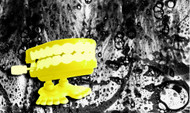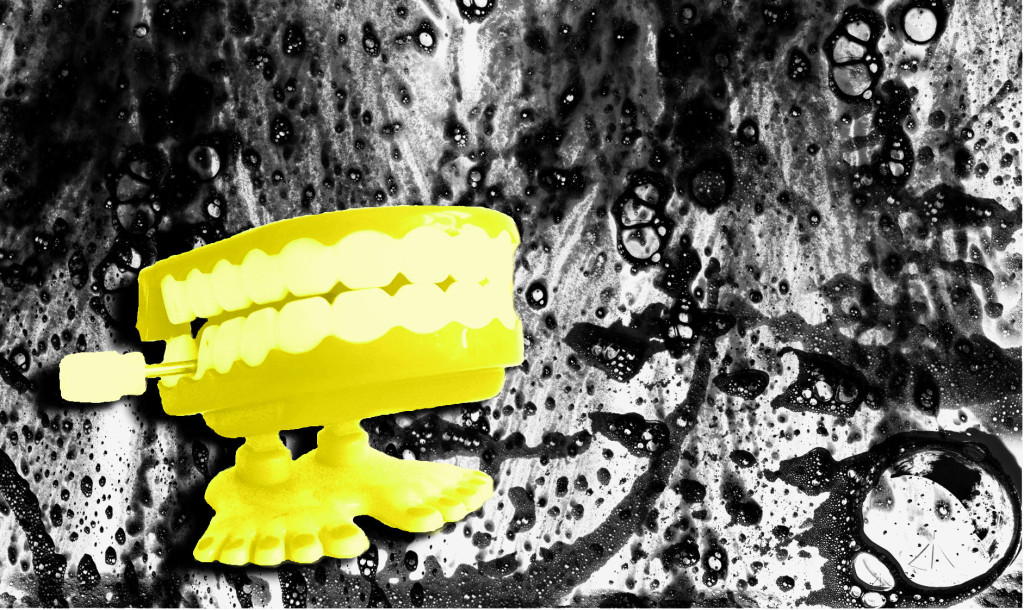Blast Away Plaque: Air Polishers, Sandblasters of the Dental World
By on Feb 15 2016
If you're familiar with sandblasting, you have probably already realized its incredible potential as a multi-purpose machine: blast equipment can be used to clean graffiti off walls, remove corrosion and coatings from most types of surfaces, and even be used in the applications of certain arts, such as creating frosted glass. Basically, abrasive blast machines have a knack for refurbishing, or making things superficially new.
To understand the mechanism of sandblasters on its most basic level:
compressed air + abrasive = blast off
It's a lot more complex than that, of course, but just think about the premise for a bit. You don't need to know what a safety petcock is, or the function of a twinline hose, to grasp the potential power in shooting pressurized grit out of a nozzle.
It may not come as a surprise that similar types of equipment are used outside of just shipyards, railyards, and construction sites. But did you know that dental health professionals are using handheld blasters to clean teeth?

Now don't go thinking that your good old doc will be blasting sand or metal bits at your face at 100 psi (you probably wouldn't have too much of a mouth left, if we're being completely honest).
No, these little abrasive blasters are much smaller and less powerful that your average Clemco model 3680 20 cuft sandblast machine, for example.
The term for this device is air polisher, which sounds a lot better than what I would probably call it (e.g. a tooth blaster). To better understand air polishers, I talked a good friend of mine, Megan, who works as a dental hygienist in Pennsylvania. She researched subgingival glycine air polishers extensively when she was still in hygiene school.
The Interview
Setting the scene:
It was a Thursday. Around 6pm. We decided to talk about sandblasting and plaque removal over dinner at the bar/restaurant we always wind up going (just a couple of bffs talking shop).
Her red hair matched the valentine's rose on the table, the ketchup, and my sweatshirt (no, I wasn't asked to say that).
I asked her if she knew anything about sandblasters.
She didn't, but I already knew that.
After a brief chitchat about blasting, but before our turkey burgers arrived, she told me about air polishers and how they operate. Essentially, air polishers are a fast, safe, effective means of deplaquing the entire mouth, including subgingival root surfaced and oral mucosa. "
A really simple explanation regarding the mechanism of air polishers (as told by someone with no experience, aka me):
compressed air + polishing powder (abrasive) + water = blast off.
See the similarities here?
For sandblasting, abrasives include glass beads, steel, slags, garnet, plastic, etc. For air polishing, the types of abrasives used are quite different (for obvious reasons). In the US, the most commonly used powder is sodium bicarbonate (NaCOH3); more recently, however, glycine has become a popular option for subgingival application (sodium bicarbonate should only be used supragingivally because of its higher abrasive quality).

I also asked Megan about what type of safety precautions are taken when using air polishers. With industrial sandblasting, for example, individuals in the vicinity need to be wearing appropriate safety gear, which includes but is not limited to a blast suit and a respirator. In the dental version, she informed me, both dentist and patient should be wearing glasses, and the dentist wears a mask. Sometimes the patient will also wear a larger apron-type bib (because the process can get a little messy). Offices should also have some kind of ventilation system in place to minimize floating air abrasives as well as minimizing airborne mouth bacteria (eww).
Air polishers are popular, but they're not super common, at least not in my (admittedly limited) experience: most of us have probably had our teeth scaled by hand via prophy angle. But air polishers are quicker than that traditional manual method.
If you're not a dental health professional (as I am not), you might be unsure what to make of this. You also might be wondering why you should even care.
Well, if you don't think it's neat that similar equipment is used to clean both railyards and teeth, that's your choice. But it is something to consider the next time you go to your friendly neighborhood hygienist for a cleaning.
How would you feel about getting your teeth cleaned that way?
Other References:
http://www.dentistryiq.com/articles/2014/01/rdhgrad-the-necessity-of-subgingival-air-polishers.html










